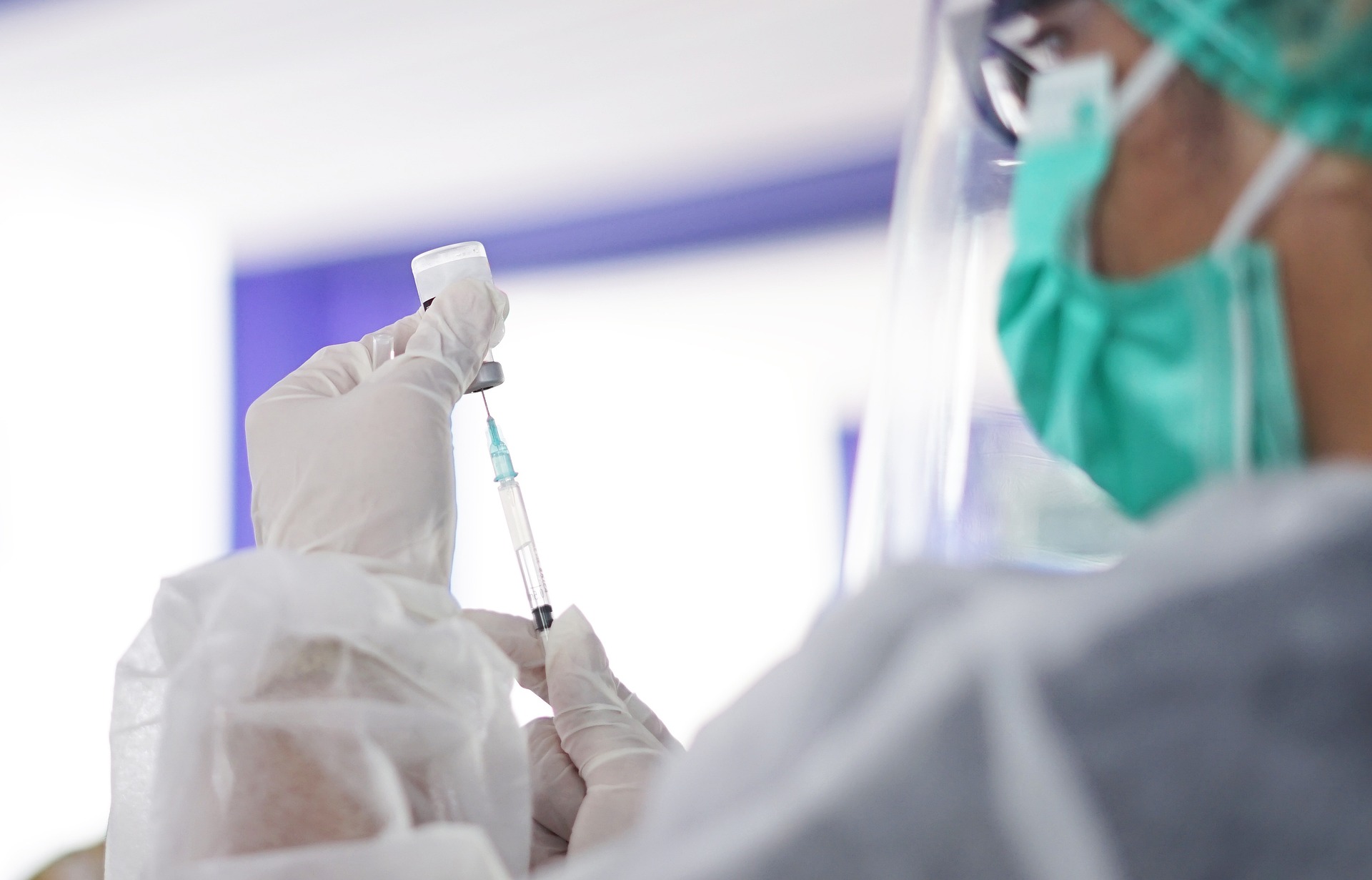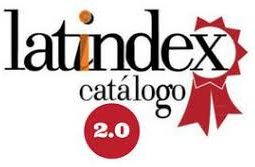Respuesta inmune contra SARS-CoV-2 en personas con VIH convalecientes de COVID-19
Resumen
Desde principios de la pandemia de SARS-CoV-2, se ha debatido el curso de la enfermedad COVID-19 en personas con VIH. Por un lado, la inmunodeficiencia derivada de la infección por VIH y mayor prevalencia de comorbilidades estarían asociadas al desarrollo de enfermedad grave. Por otro lado, la disfunción inmunológica podría evitar una respuesta inflamatoria exacerbada.
En este trabajo de revisión analizamos la evidencia disponible en cuanto a la relación entre la manifestación clínica de COVID-19 y la respuesta inmune humoral y celular contra SARS-CoV-2 en el contexto de la coinfección con VIH. La bibliografía sugiere que las personas con VIH que reciben tratamiento antirretroviral logran respuestas eficaces contra SARS-CoV-2, a pesar de presentar algunas de las funciones celulares alteradas. Esto sugiere un impacto significativo de la terapia antirretroviral, no solo en el control del VIH sino en potenciar la inmunidad para restringir otras infecciones.
Descargas
Citas
2. Deeks SG, Overbaugh J, Phillips A, Buchbinder S (2015) HIV infection. Nat Rev Dis Prim 1:15035. https://doi.org/10.1038/nrdp.2015.35
3. Vaillant AAJ, Gulick PG (2021) HIV Disease Current Practice.
4. McCune JM (2001) The dynamics of CD4+ T-cell depletion in HIV disease. Nature 410:974–979. https://doi.org/10.1038/35073648
5. Byrd KM, Beckwith CG, Garland JM, et al (2020) SARS‐CoV‐2 and HIV coinfection: clinical experience from Rhode Island, United States. J Int AIDS Soc 23:. https://doi.org/10.1002/jia2.25573
6. Cooper T, Woodward B, Alom S, Harky A (2020) Coronavirus disease 2019 (COVID‐19) outcomes in HIV/AIDS patients: a systematic review. HIV Med 21:567–577. https://doi.org/10.1111/hiv.12911
7. Karmen-Tuohy S, Carlucci PM, Zervou FN, et al (2020) Outcomes Among HIV-Positive Patients Hospitalized With COVID-19. JAIDS J Acquir Immune Defic Syndr 85:6–10. https://doi.org/10.1097/QAI.0000000000002423
8. Venturas J, Zamparini J, Shaddock E, et al (2021) Comparison of outcomes in HIV-positive and HIV-negative patients with COVID-19. J Infect 83:217–227. https://doi.org/10.1016/j.jinf.2021.05.020
9. Vizcarra P, Pérez-Elías MJ, Quereda C, et al (2020) Description of COVID-19 in HIV-infected individuals: a single-centre, prospective cohort. Lancet HIV 7:e554–e564. https://doi.org/10.1016/S2352-3018(20)30164-8
10. Mondi A, Cimini E, Colavita F, et al (2021) COVID‐19 in people living with HIV: Clinical implications of dynamics of the immune response to SARS‐CoV‐2. J Med Virol 93:1796–1804. https://doi.org/10.1002/jmv.26556
11. Stoeckle K, Johnston CD, Jannat-Khah DP, et al (2020) COVID-19 in Hospitalized Adults With HIV. Open Forum Infect Dis 7:1–7. https://doi.org/10.1093/ofid/ofaa327
12. Spinelli MA, Lynch KL, Yun C, et al (2021) SARS-CoV-2 seroprevalence, and IgG concentration and pseudovirus neutralising antibody titres after infection, compared by HIV status: a matched case-control observational study. Lancet HIV 8:e334–e341. https://doi.org/10.1016/S2352-3018(21)00072-2
13. Karim F, Gazy I, Cele S, et al (2021) HIV status alters disease severity and immune cell responses in Beta variant SARS-CoV-2 infection wave. Elife 10:1–19. https://doi.org/10.7554/eLife.67397
14. Mellor MM, Bast AC, Jones NR, et al (2021) Risk of adverse coronavirus disease 2019 outcomes for people living with HIV. AIDS 35:F1–F10. https://doi.org/10.1097/QAD.0000000000002836
15. Ho H, Peluso MJ, Margus C, et al (2021) Clinical Outcomes and Immunologic Characteristics of Coronavirus Disease 2019 in People With Human Immunodeficiency Virus. J Infect Dis 223:403–408. https://doi.org/10.1093/infdis/jiaa380
16. Bhaskaran K, Rentsch CT, MacKenna B, et al (2021) HIV infection and COVID-19 death: a population-based cohort analysis of UK primary care data and linked national death registrations within the OpenSAFELY platform. Lancet HIV 8:e24–e32. https://doi.org/10.1016/S2352-3018(20)30305-2
17. Nomah DK, Reyes-Urueña J, Díaz Y, et al (2021) Sociodemographic, clinical, and immunological factors associated with SARS-CoV-2 diagnosis and severe COVID-19 outcomes in people living with HIV: a retrospective cohort study. Lancet HIV 8:e701–e710. https://doi.org/10.1016/S2352-3018(21)00240-X
18. Minotti C, Tirelli F, Barbieri E, et al (2020) How is immunosuppressive status affecting children and adults in SARS-CoV-2 infection? A systematic review. J Infect 81:e61–e66. https://doi.org/10.1016/j.jinf.2020.04.026
19. Kanwugu ON, Adadi P (2021) HIV/SARS‐CoV‐2 coinfection: A global perspective. J Med Virol 93:726–732. https://doi.org/10.1002/jmv.26321
20. Maggiolo F, Zoboli F, Arosio M, et al (2021) SARS‐CoV‐2 infection in persons living with HIV: A single center prospective cohort. J Med Virol 93:1145–1149. https://doi.org/10.1002/jmv.26352
21. Sharov KS (2021) HIV/SARS-CoV-2 co-infection: T cell profile, cytokine dynamics and role of exhausted lymphocytes. Int J Infect Dis 102:163–169. https://doi.org/10.1016/j.ijid.2020.10.049
22. Hoffmann C, Casado JL, Härter G, et al (2021) Immune deficiency is a risk factor for severe COVID‐19 in people living with HIV. HIV Med 22:372–378. https://doi.org/10.1111/hiv.13037
23. Giannone D, Vecchione MB, Czernikier A, et al (2022) SARS-CoV-2 humoral and cellular immune responses in COVID-19 convalescent individuals with HIV. J Infect 1:1–11. https://doi.org/10.1016/j.jinf.2022.05.026
24. Venturas J, Zamparini J, Shaddock E, et al (2021) Comparison of outcomes in HIV-positive and HIV-negative patients with COVID-19. J Infect 83:217–227. https://doi.org/10.1016/j.jinf.2021.05.020
25. SeyedAlinaghi S, Karimi A, MohsseniPour M, et al (2021) The clinical outcomes of COVID‐19 in HIV‐positive patients: A systematic review of current evidence. Immunity, Inflamm Dis 9:1160–1185. https://doi.org/10.1002/iid3.497
26. Hu B, Guo H, Zhou P, Shi Z-L (2021) Characteristics of SARS-CoV-2 and COVID-19. Nat Rev Microbiol 19:141–154. https://doi.org/10.1038/s41579-020-00459-7
27. Apicella M, Campopiano MC, Mantuano M, et al (2020) COVID-19 in people with diabetes: understanding the reasons for worse outcomes. Lancet Diabetes Endocrinol 8:782–792. https://doi.org/10.1016/S2213-8587(20)30238-2
28. Ambrosioni J, Blanco JL, Reyes-Urueña JM, et al (2021) Overview of SARS-CoV-2 infection in adults living with HIV. Lancet HIV 8:e294–e305. https://doi.org/10.1016/S2352-3018(21)00070-9
29. Lee KW, Yap SF, Ngeow YF, Lye MS (2021) COVID-19 in People Living with HIV: A Systematic Review and Meta-Analysis. Int J Environ Res Public Health 18:3554. https://doi.org/10.3390/ijerph18073554
30. Massarvva T (2021) Clinical outcomes of COVID-19 amongst HIV patients: a systematic literature review. Epidemiol Health 43:e2021036. https://doi.org/10.4178/epih.e2021036
31. del Amo J, Polo R, Moreno S, et al (2022) SARS-CoV-2 infection and coronavirus disease 2019 severity in persons with HIV on antiretroviral treatment. AIDS 36:161–168. https://doi.org/10.1097/QAD.0000000000003132
32. Waters LJ, Pozniak AL (2021) COVID-19 death in people with HIV: interpret cautiously. Lancet HIV 8:e2–e3. https://doi.org/10.1016/S2352-3018(20)30332-5
33. Lee MJ, Snell LB, Douthwaite ST, et al (2022) Clinical outcomes of patients with and without HIV hospitalized with COVID‐19 in England during the early stages of the pandemic: a matched retrospective multi‐centre analysis (RECEDE‐C19 study). HIV Med 23:121–133. https://doi.org/10.1111/hiv.13174
34. Mehta P, McAuley DF, Brown M, et al (2020) COVID-19: consider cytokine storm syndromes and immunosuppression. Lancet 395:1033–1034. https://doi.org/10.1016/S0140-6736(20)30628-0
35. Liu Z, Long W, Tu M, et al (2020) Lymphocyte subset (CD4+, CD8+) counts reflect the severity of infection and predict the clinical outcomes in patients with COVID-19. J Infect 81:318–356. https://doi.org/10.1016/j.jinf.2020.03.054
36. Merad M, Martin JC (2020) Pathological inflammation in patients with COVID-19: a key role for monocytes and macrophages. Nat Rev Immunol 20:355–362. https://doi.org/10.1038/s41577-020-0331-4
37. Zhou Y, Fu B, Zheng X, et al (2020) Pathogenic T-cells and inflammatory monocytes incite inflammatory storms in severe COVID-19 patients. Natl Sci Rev 7:998–1002. https://doi.org/10.1093/nsr/nwaa041
38. Giannone D, Vecchione MB, Czernikier A, et al (2022) SARS-CoV-2 humoral and cellular immune responses in COVID-19 convalescent individuals with HIV. Prepr (Version 1) available Res Sq. https://doi.org/10.21203/rs.3.rs-1229520/v1
39. Gatechompol S, Avihingsanon A, Putcharoen O, et al (2021) COVID-19 and HIV infection co-pandemics and their impact: a review of the literature. AIDS Res Ther 18:28. https://doi.org/10.1186/s12981-021-00335-1
40. Moir S, Chun TW, Fauci AS (2011) Pathogenic mechanisms of HIV disease. Annu Rev Pathol Mech Dis 6:223–248. https://doi.org/10.1146/annurev-pathol-011110-130254
41. Li Q, Estes JD, Schlievert PM, et al (2009) Glycerol monolaurate prevents mucosal SIV transmission. Nature 458:1034–1038. https://doi.org/10.1038/nature07831
42. Brenchley JM, Price DA, Schacker TW, et al (2006) Microbial translocation is a cause of systemic immune activation in chronic HIV infection. Nat Med 12:1365–1371. https://doi.org/10.1038/nm1511
43. Zhou F (2020) Clinical Course And Risk Factors For Mortality Of Adult In Patients With COVID-19 In Wuhan, China: A Retrospective Cohort Study. J Med Study Res 3:01–02. https://doi.org/10.24966/MSR-5657/100015
44. Li M, Guo W, Dong Y, et al (2020) Elevated Exhaustion Levels of NK and CD8+ T Cells as Indicators for Progression and Prognosis of COVID-19 Disease. Front Immunol 11:1–10. https://doi.org/10.3389/fimmu.2020.580237
45. Paiardini M, Müller-Trutwin M (2013) HIV-associated chronic immune activation. Immunol Rev 254:78–101. https://doi.org/10.1111/imr.12079
46. Lei J, Yin X, Shang H, Jiang Y (2019) IP-10 is highly involved in HIV infection. Cytokine 115:97–103. https://doi.org/10.1016/j.cyto.2018.11.018
47. Moir S, Fauci AS (2017) B-cell responses to HIV infection. Immunol Rev 275:33–48. https://doi.org/10.1111/imr.12502
48. Lindqvist M, van Lunzen J, Soghoian DZ, et al (2012) Expansion of HIV-specific T follicular helper cells in chronic HIV infection. J Clin Invest 122:3271–3280. https://doi.org/10.1172/JCI64314
49. Peng X, Ouyang J, Isnard S, et al (2020) Sharing CD4+ T Cell Loss: When COVID-19 and HIV Collide on Immune System. Front Immunol 11:1–11. https://doi.org/10.3389/fimmu.2020.596631
50. Alrubayyi A, Gea-Mallorquí E, Touizer E, et al (2021) Characterization of humoral and SARS-CoV-2 specific T cell responses in people living with HIV. Nat Commun 12:5839. https://doi.org/10.1038/s41467-021-26137-7
51. Phetsouphanh C, Xu Y, Zaunders J (2015) CD4 T Cells Mediate Both Positive and Negative Regulation of the Immune Response to HIV Infection: Complex Role of T Follicular Helper Cells and Regulatory T Cells in Pathogenesis. Front Immunol 5:. https://doi.org/10.3389/fimmu.2014.00681
52. Zhang J, Liu W, Wen B, et al (2019) Circulating CXCR3+ Tfh cells positively correlate with neutralizing antibody responses in HCV-infected patients. Sci Rep 9:10090. https://doi.org/10.1038/s41598-019-46533-w
53. Bentebibel S-E, Lopez S, Obermoser G, et al (2013) Induction of ICOS + CXCR3 + CXCR5 + T H Cells Correlates with Antibody Responses to Influenza Vaccination. Sci Transl Med 5:1–11. https://doi.org/10.1126/scitranslmed.3005191
54. Martin-Gayo E, Cronin J, Hickman T, et al (2017) Circulating CXCR5+CXCR3+PD-1lo Tfh-like cells in HIV-1 controllers with neutralizing antibody breadth. JCI Insight 2:. https://doi.org/10.1172/jci.insight.89574
55. Zhang J, Wu Q, Liu Z, et al (2021) Spike-specific circulating T follicular helper cell and cross-neutralizing antibody responses in COVID-19-convalescent individuals. Nat Microbiol 6:51–58. https://doi.org/10.1038/s41564-020-00824-5
56. Moir S, Fauci AS (2009) B cells in HIV infection and disease. Nat Rev Immunol 9:235–245. https://doi.org/10.1038/nri2524
57. González-Domenech CM, Pérez-Hernández I, Gómez-Ayerbe C, et al (2021) A Pandemic within Other Pandemics. When a Multiple Infection of a Host Occurs: SARS-CoV-2, HIV and Mycobacterium tuberculosis. Viruses 13:931. https://doi.org/10.3390/v13050931
58. Azkur AK, Akdis M, Azkur D, et al (2020) Immune response to SARS‐CoV‐2 and mechanisms of immunopathological changes in COVID‐19. Allergy 75:1564–1581. https://doi.org/10.1111/all.14364
59. Xu Z, Shi L, Wang Y, et al (2020) Pathological findings of COVID-19 associated with acute respiratory distress syndrome. Lancet Respir Med 8:420–422. https://doi.org/10.1016/S2213-2600(20)30076-X
60. Sallusto F (2016) Heterogeneity of Human CD4 + T Cells Against Microbes. Annu Rev Immunol 34:317–334. https://doi.org/10.1146/annurev-immunol-032414-112056
61. Rydyznski Moderbacher C, Ramirez SI, Dan JM, et al (2020) Antigen-Specific Adaptive Immunity to SARS-CoV-2 in Acute COVID-19 and Associations with Age and Disease Severity. Cell 183:996-1012.e19. https://doi.org/10.1016/j.cell.2020.09.038
62. Perdomo-Celis F, Taborda NA, Rugeles MT (2019) CD8+ T-Cell Response to HIV Infection in the Era of Antiretroviral Therapy. Front Immunol 10:. https://doi.org/10.3389/fimmu.2019.01896
63. Mikulak J, Oriolo F, Zaghi E, et al (2017) Natural killer cells in HIV-1 infection and therapy. AIDS 31:2317–2330. https://doi.org/10.1097/QAD.0000000000001645
64. McMichael AJ, Borrow P, Tomaras GD, et al (2010) The immune response during acute HIV-1 infection: Clues for vaccine development. Nat Rev Immunol 10:11–23. https://doi.org/10.1038/nri2674
65. Wang D, Hu B, Hu C, et al (2020) Clinical Characteristics of 138 Hospitalized Patients with 2019 Novel Coronavirus-Infected Pneumonia in Wuhan, China. JAMA - J Am Med Assoc 323:1061–1069. https://doi.org/10.1001/jama.2020.1585
66. Zhou Y, Zhang Z, Tian J, Xiong S (2020) Risk factors associated with disease progression in a cohort of patients infected with the 2019 novel coronavirus. Ann Cardiothorac Surg 9:428–436. https://doi.org/10.21037/apm.2020.03.26
67. Mondi A, Cimini E, Colavita F, et al (2021) COVID‐19 in people living with HIV: Clinical implications of dynamics of the immune response to SARS‐CoV‐2. J Med Virol 93:1796–1804. https://doi.org/10.1002/jmv.26556
68. Ghasemzadeh M, Ghasemzadeh A, Hosseini E (2022) Exhausted NK cells and cytokine storms in COVID-19: Whether NK cell therapy could be a therapeutic choice. Hum Immunol 83:86–98. https://doi.org/10.1016/j.humimm.2021.09.004







